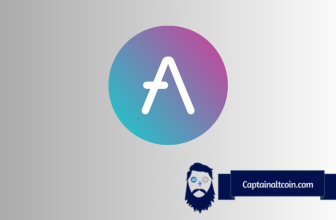
The QTUM network was launched in 2017 as an exciting blockchain that adopted elements of both Bitcoin and Ethereum concepts to build theoretical synergy.
QTUM is a smart contract platform created with Ethereum compatibility in mind, using the same virtual machine and hence the smart contracts. It also aims to improve upon Ethereum’s perceived failures.
QTUM roadmap was planned in stages and the project moved from an initial testnet in June 2017, Sparknet, to a main network, Ignition, in September 13th 2017, a less than three month turnaround. QTUM was able to launch this rapidly because it built its blockchain using hunks of code from the Bitcoin, Blackcoin and Ethereum blockchains.
From Blackcoin, QTUM takes a Proof-of-Stake consensus algorithm, while from Bitcoin it integrates the UTXO model.
What are best ethereum alternatives for token launches?
However, as the market tumbled down, Qtum’s price hit all time lows, questions regarding network performance and its ability to improve upon competitor solutions emerge. The climb back to the top may be a challenging one.
What you'll learn 👉
The concept and blockchain per se is good
This decentralized blockchain project introduces some features which make it unique in the current crypto space:
- Built on top of Bitcoin’s UTXO model
- Supports Ethereum Virtual Machine-based smart contracts
- Has an Account Abstraction Layer that allows the smart contracts to operate
- Implements a Smart Staking Protocol (PoS designed for smart contracts, which can’t take part in staking just yet)
- Has an early and basic smart contract GUI which allows for creation, execution and interaction with smart contracts
- Has a Regtest mode, which is ideal for developers who wish to create their own private test blockchain
- Has a functional Decentralized Governance Protocol which allows certain network parameters to be modified without a fork
- QTUM is the first blockchain to be launched into space;
- The first movie distributed via blockchain was launched on the QTUM platform;
- Partnership with Pundi X is a big plus for QTUM as many point of sale device will be using QTUM, BTC, ETH as a currency for payments (although this confusing because QTUM is not designed as a payment crypto). Pundi X should be next best thing since splitting the Atom for the crypto world as it is bringing crypto to the mainstream! First launching in Indonesia a country of 300M people.
The blend of UTXO, ETH VM, x86 VM, decentralized governance, proof-of-stake, IoT/mobile friendly make it a platform with a lof potential but also uncertainty. Qtum Foundation has stated that it will increase its marketing efforts once x86 VM is out so we will see if that pans out well for QTUM.
Brutal competition
While Qtum can run Ethereum smart contracts, there isn’t a lot of a large incentive for developers to start developing on Qtum over Ethereum at present time. Ethereum has 50 times the market cap and 50 times the brand awareness. There’s also a huge community of tooling built up around ETH with its first mover advantage.
Ethereum is not the only problem for Qtum. A whole slew of platforms are emerging and are already taking a good chunk of the market; most notable EOS and Tron but also Stellar that has some unique features attractive for new token launches.
Cardano, Tezos are yet to launch properly, Zilliqa will have its mainnet by the of the month, while NEO is still a centralized blockchain. These are only the top of the line competitors, a plethora of smaller cap projects are also seeking their place under the blue sky (Stratis, Waves, Nebulas, Ethereum Classic, Lisk, Ark etc).
So the say that competition is fierce, is an understatement.
Not popular in the West
Qtum is relatively unhyped in the West. Even cryptos with smaller market caps like Nano seem to have more passionate fan base in the West. To this day, most of Qtum’s trading volume comes from Asian exchanges.
People on the Korean Qtum community site (https://qtum.or.kr/) are very concerned about the absence of QRC-20 token support on major exchanges. According to them, a number of existing DApps were denied exchange listing already and Qtum Foundation is not doing enough to make it happen.
Projects launched on QTUM all and sundry failed
As 8btc.com writes, over the past year, Qtum has left the impression that it is a gathering place of “broken cryptocoins”- BOT, INK, SPC, HLC, OC, AWR. All these tokens issued on Quantum failed to hold their ICO price after listed on exchanges, some of which even drop close to zero.
Nevertheless, a majority of tokens issued on Quantum blockchain turn out to be failures. Why? “Because they are too imaginative and unpractical. To get a sense how crazy they are – HalalChain (HLC), aiming to reshape the Islamic world with solutions to halal food traceability, and it was allegedly backed by Dubai royal family; and the ambitious SpaceChain (SPC) …” industry sources concluded.
“Look at their names, full of fantasy! How could that be real?”
According to data from Qtum’s official website, there are currently 173 tokens issued on it, among which, 136 tokens are little-known, held merely by several individuals, and only 21 tokens have holders in 4-digit numbers.
Dreary outlook for 2019
Lastly, the overcrowded market for smart contract platforms will take its own natural selection course and eradicate the weak entities while rewarding the strong ones. Qtum is going to have an uphill battle to be in the latter camp.







